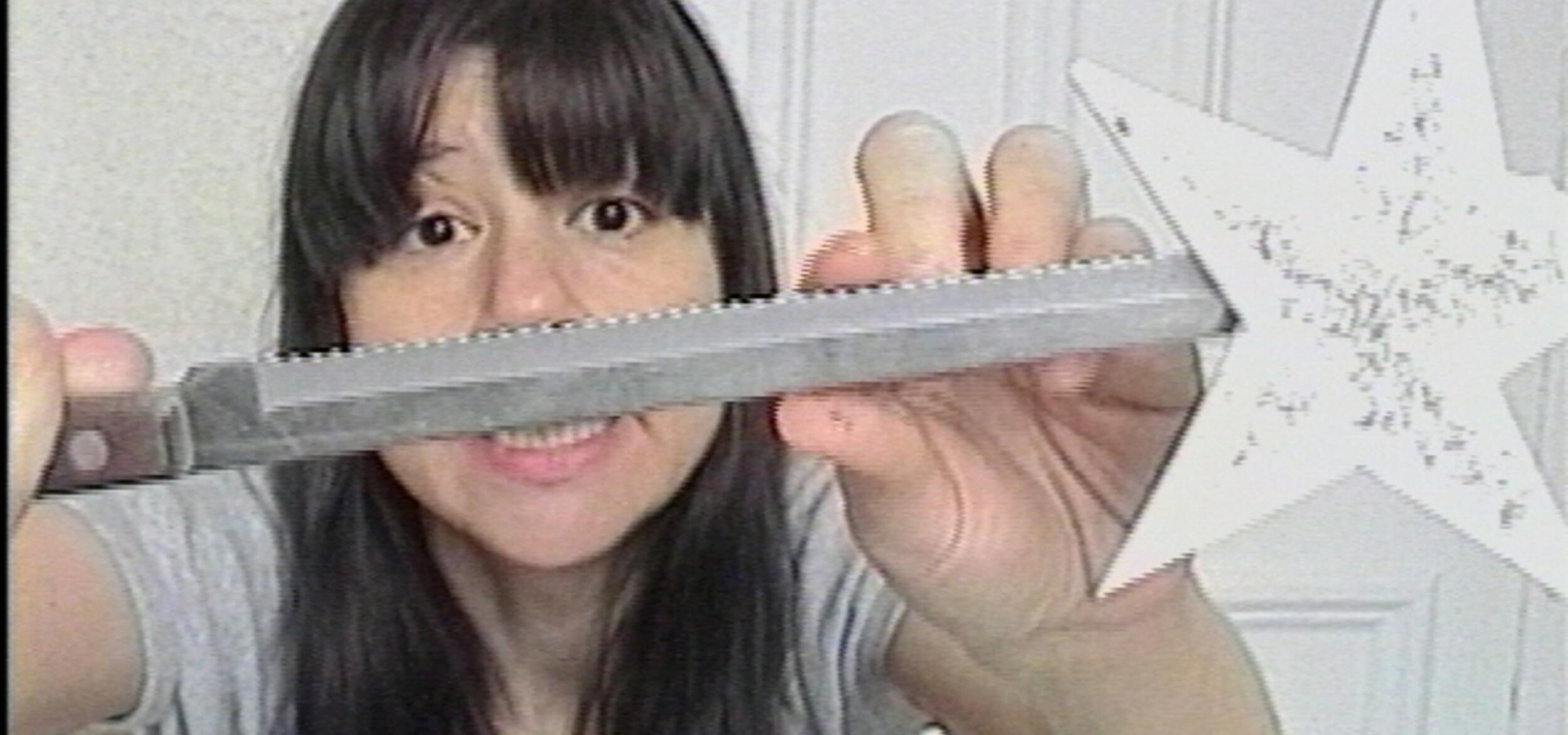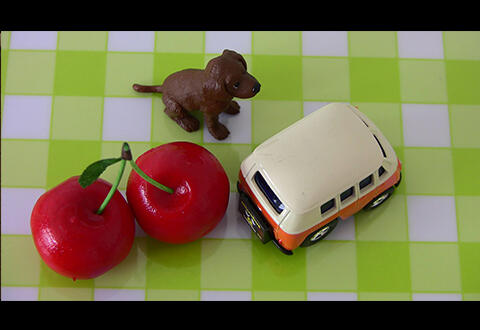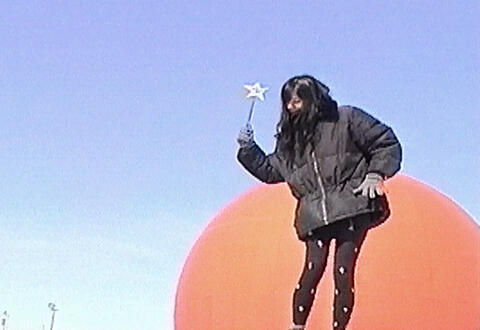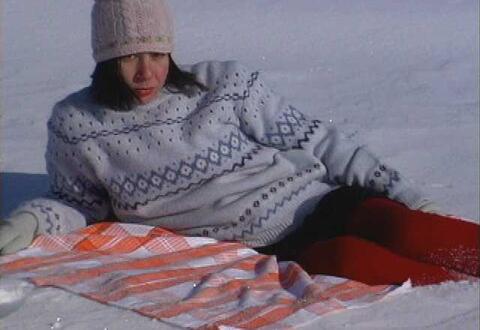
Not a Simple Girl: The Work of Sylvie Laliberté
In her film The Tool Is Not Always a Hammer (L’outil n’est pas toujours un marteau, 2000), Sylvie Laliberté sums up at a stroke, in a single phrase, the overall impression one has of her quite singular body of work: “I like simplicity, but I’m not a simple girl.” Indeed since her first performances in 1985 this video maker, singer, author and woman-of-the-arts has had more than one string to her bow. It was not until 1995, however, that she took up position behind the camera, which she has never left, making more than one film per year right up until 2011, when her next work is yet to come. But what, more precisely, is a Sylvie Laliberté film or video?
First of all, it’s preserved absurdity, an often immobile camera filming her, always her and no one else. Shot from head to foot, her body is as important as her face, and her cinema, in a sense, appears to be a reflection on this relationship between the mind and the body, the material world. Trying to do away with facile connections, Laliberté takes apart preconceived ideas, turns them around in sometimes uneven but often brilliant works, when they create the low-budget lyricism in which she excels. It must be said that moving the viewer with a close-up of her nose while in the bathtub is not easy, and that the risk she takes of a confessional aesthetic for child-like yet knowing minds succeeds on more than one occasion.
But this filmed body would not be so important if there were not a constant play of sexuality hiding behind a child’s voice. A problem child, her poetry is that of a body ravaged by life, of a lack of seriousness at the hands of a pretentiousness she never practises. Because she does not like silences, the editing quickly chops up her long takes and speech. It rushes headlong into an over-stimulated world where animation and song appear side by side without ever falling into the music clip, even though she has made of this another career. What she recites are both words to express words and speech to cleanse (almost violently) the mind of second thoughts. Next, it is philosophy as constant comedy, a way for her, a seal spinning the balloon of the predictable on her nose only to make it bounce, to sing or murmur to the camera a thoroughly contemporary distress.
For, apart from her entertaining and somewhat foolish—but always well thought out—image, Sylvie Laliberté works without compromise, excavating zones of the art video with an obviously intentional “home-made” quality, a “that’s my neighbour” quality that remains touching. Invited into the heart of a certain intimacy, the artist confides to the camera, plays with the medium’s forms and takes advantage of the fact that in video you can do pretty much anything without worrying about the film stock’s capabilities or the cost of developing it. Like a Robert Morin with a sensitive side, Laliberté looks at politics in Bien sûr and the poetic absurdity of Harmony Korine in Le soleil brille pour tout le monde, mais les hommes préfèrent les blondes: that troubling sensation, when faced with senselessness, of being in the presence of something that is in fact quite sensible.
Viewers can already see a few of Laliberté’s videos on the Vithèque site (including her best work, The Tool Is Not Always a Hammer, a good introduction for the neophyte).* First of all, Oh la la du narratif, in which the artist wanders about in the snow, dances and poses in the sun in search of attention (and thus of narrative), which she fills out with a more serious off-screen voice, creating distance between the sound and image (as she does elsewhere between the mind and the body). This is the challenge of each of these videos: to create a space of reflection out of simplicity, because nothing, in fact, is that simple.









